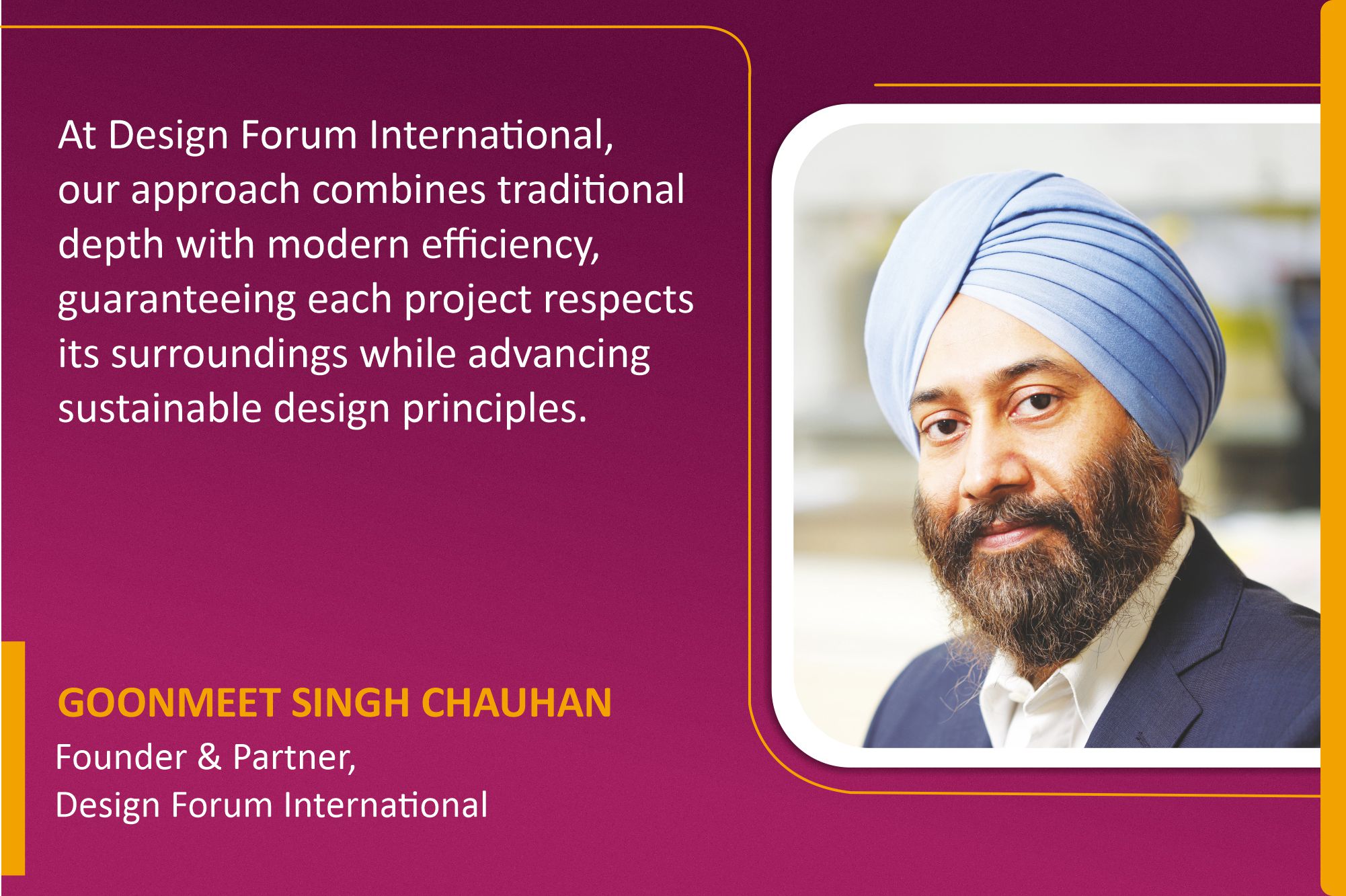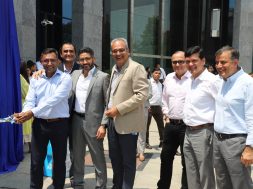Fusing cultural heritage with sustainable modernity

In this discussion, Design Forum International focuses on merging cultural heritage with contemporary design, focusing on sustainability and context-responsive structure.
How do you blend cultural elements with modern architectural designs in your projects?
Design is informed by context. The architectural and cultural vocabulary is riveted by the socio-political equilibrium of the moment. The overlaps of shifting powers, rulers, governments, and influences characterise Central Delhi, especially the administrative cluster. The characteristic inference of the classical Indo-Saracenic style evolved as the consequent architectural style. A new architectural style emerged due to the application of a Western-styled neoclassical lens to traditional contextual motifs and elements. Similar to the India Gate Hexagon’s language, the design of Vanijya Bhawan, the Ministry of Commerce and Industry in New Delhi, strives to harmonise the structure with the existing design character. The design creates its personality by incorporating the local setting into the selection of materials for the new structure, satisfying several functional needs. Colonial-style colonnades are inspired by grand stone columns similar to those in Rashtrapati Bhawan. To maintain a consistent texture, sandstone is sourced from Dholpur and Agra. The design pays special attention to the size and sociopolitical implications of its location in the nation’s capital, next to the India Gate.
How do you integrate sustainability into your design process from the initial concept to the final execution?
With India rapidly entering a future characterised by increased urbanisation, population growth, and environmental awareness, the country’s built environment is about to undergo a radical change in direction. Green buildings, considered a niche before, are now becoming essential tools for the country’s transformation towards sustainable development. Indian regulatory frameworks such as the GRIHA and the Energy Conservation Building Code (ECBC) supports sustainable design. From clever technology to passive design methods, technological advancements promise effective resource utilisation. Significantly, green buildings have long-term advantages that greatly exceed their initial expenses. They are also economically and environmentally feasible.
What criteria do you consider when selecting materials for your sustainable projects?
The concept of sustainability goes beyond superficial approaches, like adding “green tech” as an afterthought after construction. The selection of design features, the blending of contemporary and vernacular architectural principles, and the choice of materials must all be taken into account early on to create a truly context-responsive design. We have between 80 and 100 energy-efficient buildings in our portfolio. Our strategy is based on the idea that building envelope design should be orientated to meet the demands of the climate, as opposed to significantly depending on expensive MEP (Mechanical, Electrical, and Plumbing) systems. For example, rather than only depending on sustainable materiality, our architectural approach uses deep cantilevers and secondary skins that are carefully crafted to reduce heat absorption within the structure in places with higher temperatures.
How do you adapt your architectural approach to different cultural and climatic contexts?
One must be thoroughly aware of the particular location to construct in response to the context before design aspects may be naturally incorporated. Particularly tailored climate-responsive techniques can also be obtained by applying the lessons learnt from comprehending local or vernacular building practices. The world is changing quickly, and one consequence is the standardisation of architectural design and language. Incorporating conventional wisdom into new practices has the potential to create a flexible and adaptable framework, which adds to the conversation about how energy-efficient our buildings are. Passive design is a powerful yet simple method for ensuring that the the building process is aware of its carbon footprint. Using architectural features such as courtyards, strategically placed windows, or openings, passive design techniques can promote natural ventilation and balance naturally ventilated and air-conditioned areas.
Cookie Consent
We use cookies to personalize your experience. By continuing to visit this website you agree to our Terms & Conditions, Privacy Policy and Cookie Policy.










